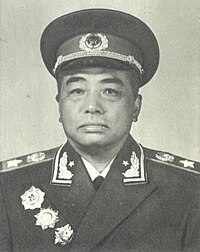
Photo from wikipedia
ABSTRACT A novel deep-buried straw incorporation management was conducted to improve organic matter and over-compacted subsoil structure in Huang-Huai-Hai Plain of China. Four straw incorporation rates (CK, 0 kg ha−1;… Click to show full abstract
ABSTRACT A novel deep-buried straw incorporation management was conducted to improve organic matter and over-compacted subsoil structure in Huang-Huai-Hai Plain of China. Four straw incorporation rates (CK, 0 kg ha−1; T1, 6 000 kg ha−1; T2, 12 000 kg ha−1; T3, 18 000 kg ha−1) were set up in this three-year field positioning test. It was found that soil water content (SWC), soil penetration resistance (SPR), soil organic carbon (SOC) and total nitrogen (TN) were improved with straw incorporation rate increasing. Especially in the subsoil layer, compared with CK, T3 created the highest average increase in SWC (61.3%), the lowest SPR (59.4%–39.6%) and the highest increase in SOC (25.9%) and TN (19.2%) during the three years. However, T2 had the highest average SOC conversion rate (41.1%) over the three years and the highest C:N (7.1%) in the third year. Treatments of T2 and T3 showed similar significant increases in wheat and maize yield (7% and 5%, respectively), and root biomass (approximately 19%), which were positively correlated with SWC and SOC. We concluded increasing straw incorporation rates showed more positive effects on improving subsoil SOC and structure, in which T3 had a higher SOC increase while T2 had a higher C-conversion efficiently.
Journal Title: Archives of Agronomy and Soil Science
Year Published: 2019
Link to full text (if available)
Share on Social Media: Sign Up to like & get
recommendations!